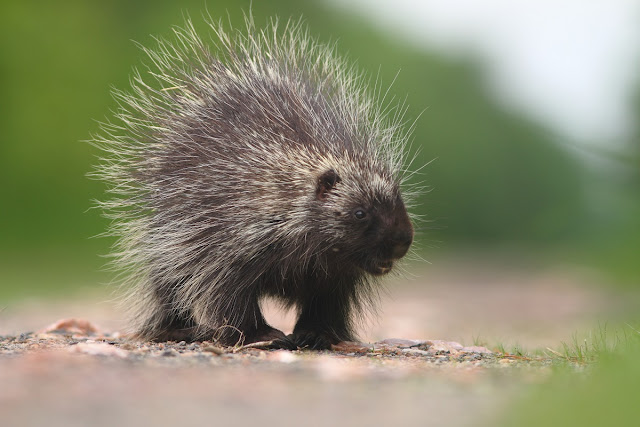Where Raspberries Come From 21 June 2013
A small bee, perhaps a native species, resting among the leaves of a raspberry...
There is wondrous complexity in the world, and it is helpful
to think of nature’s processes as woven fabrics. Sometimes, the fabric is tightly woven.
Sometimes the fabric is loosely woven.
The strands have different sizes and different levels of importance, and
there is little uniformity in the weave.
Sometimes, the strands cause bunching and lumping in the fabric, giving
it unusual dimensions. Biological
diversity, the threads of nature’s fabric, builds a fabric that is difficult to
grasp for those seeking uniformity and tidy neatness. Nature’s order is beautiful in its chaos, but
the forms and functions we see in this fabric have to do with the interactions
of the threads, the unique variety of threads in the fabric we study.
Henslow's Sparrow, a thread in the prairie fabric...
The Henslow’s Sparrow is a rare thread in the Great Lakes
states. The fabric in question is
prairie, and the assortment of threads that makes the bird possible includes a
few important connecting threads considered here… The first is that the prairie
needs to have a taller grass component.
Secondly, it is very important that time and succession have allowed a
dead thatch to build up beneath the rapidly growing live grasses. Another is that the prairie needs to be quite
large, quite expansive, largely free of trees and shrubs. It even seems as though some rolling
topography helps to weave in the Henslow’s Sparrow thread more strongly. A large and complex prairie fabric will have
spots in which different sorts of grasses, different sorts of heights,
different sorts of microcosms are woven together, resulting in a rich
assortment of avian threads. These are
woven in song as much as in function, and the chorus may include exuberant,
nasal Bobolinks, musical Eastern Meadowlarks, lazily buzzing Grasshopper
Sparrows, and bouncing Field Sparrow Songs.
We have a tendency to dutifully oversimplify ecological
functions. Recently we have all become students
of bees, and most of us know that honey bees are experiencing precipitous
population declines, that honey bees are the heroes that give us “one in every
three mouthfuls of food”, and that honey bees’ colony collapse disorder is a
real and serious problem. But the truth
is not so simple. Before European
honeybees were brought to this North American landscape, how on Earth did
anything get pollinated? It turns out
there are many, many native species of bees as well, and they all continue to
do the work of pollination. In fact, it
is likely that the native bee and wasp species are more abundant, more efficient, and more effective at pollinating a wider
variety of plants. After all, they are
the threads of an older fabric here. They all deserve recognition in the news.
Strangely, we know very little about our native bees.
Scientists are still working to find out which threads have broken, which
threads have weakened, and if there are new threads in the fabric that could
cause problems. Could our use of many
new pesticides and industrial chemicals be taxing the immune systems of our
bees? Pollinators are vastly important, lending to
the pollination of agricultural crops and, more importantly, a rich and vast
diversity of natural flowering plants growing wild in every functioning
terrestrial ecosystems. There are
threads in the forest fabric such as American Basswood trees and
Spotted-touch-me-not flowers, threads of wild food including blackberries,
raspberries, black-caps, serviceberries and blueberries, that are pollinated by
bees.
We need bees. Our
ecosystem fabrics have been successfully bunching up around bee threads for 100
million years, and the bunching fabric has grown strong and tight amid the
threads of bees. I stood by a small patch of raspberry plants for about an hour with my camera ready. The rich diversity I witnessed in that hour was inspirational. All of these bees were photographed in just an hour, in an area of about five by five feet. Enjoy the threads of biological diversity, this gallery of “Where
Raspberries Come From.”
All images were made
with a refurbished Canon 7D and Canon 300mm f4L IS lens.





















































